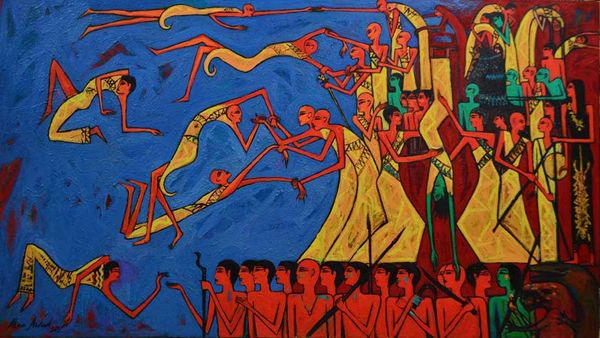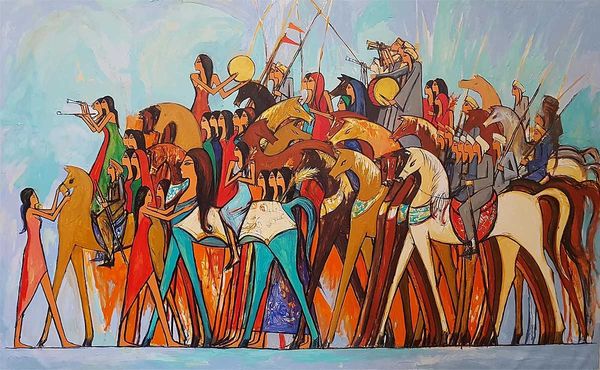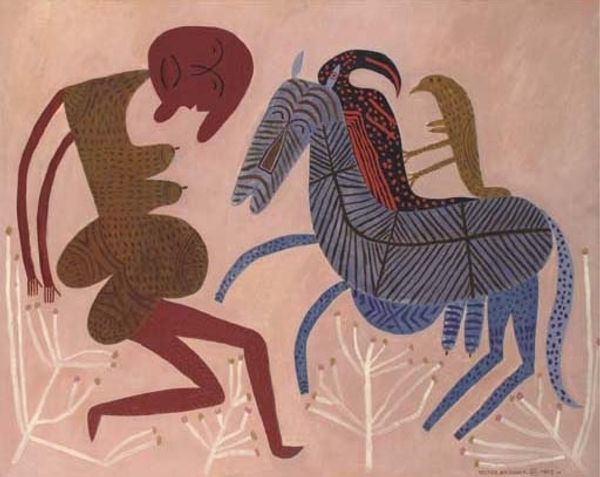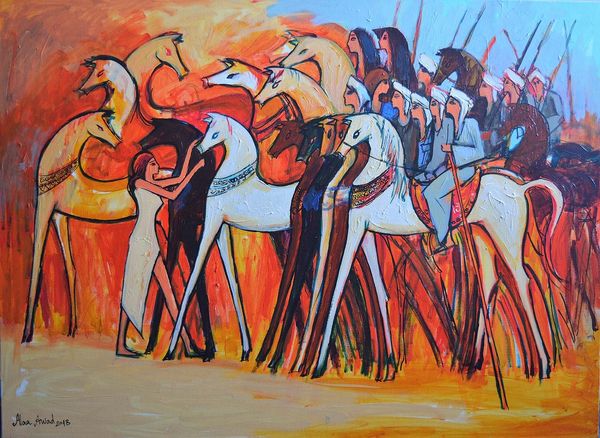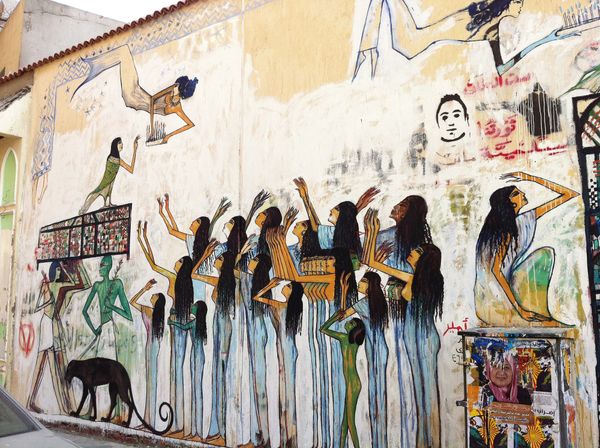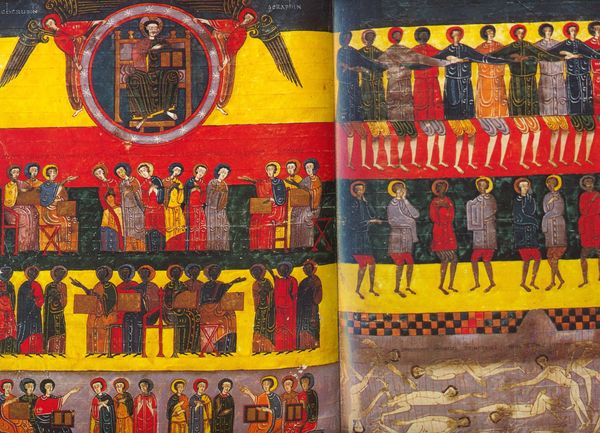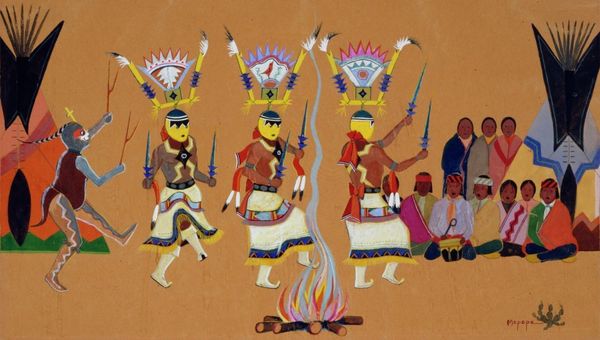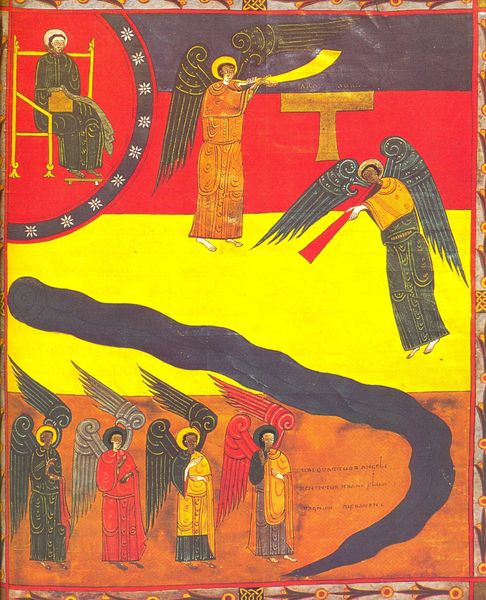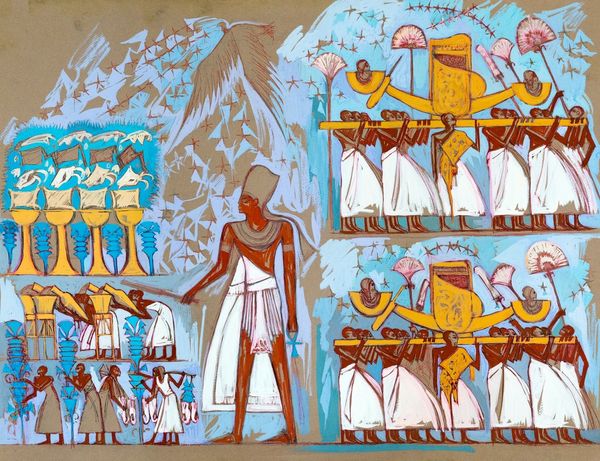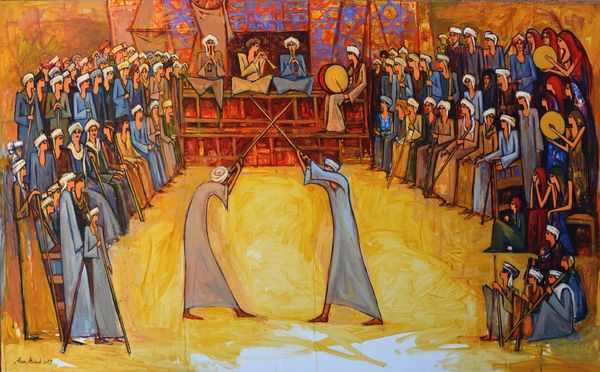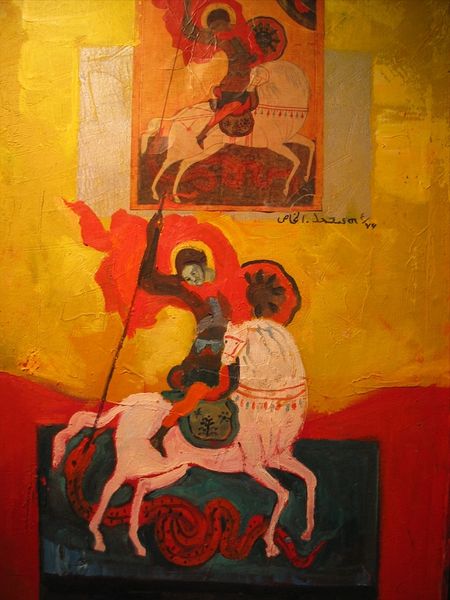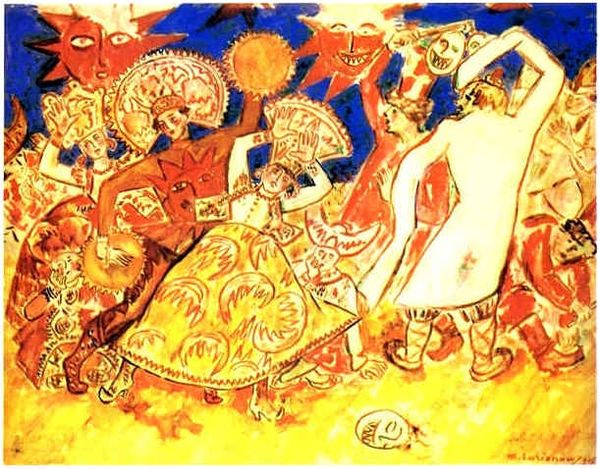
Copyright: Alaa Awad,Fair Use
Editor: This acrylic on canvas is "White Horses" by Alaa Awad, created in 2016. I'm struck by how the composition is organized in two distinct registers, almost like a frieze, with so much happening, yet the colors and figures feel very intentionally arranged. What’s your interpretation of this work? Curator: This work certainly presents a rich tapestry of historical and cultural references. Given Awad's background and the themes he often explores, I see a strong connection to Egyptian history and social commentary. Notice how the figures are depicted somewhat like ancient Egyptian tomb paintings, a deliberate choice to invoke the past. What do you think is the artist’s intent behind blending ancient and contemporary styles? Editor: Well, perhaps he's trying to draw a parallel between historical events and modern-day issues? Is he suggesting that certain societal structures or power dynamics repeat themselves throughout history? Curator: Exactly! Think about the context in which Awad created this. It’s contemporary, but it visually references a distant past. The repetition of figures, the linear processions… these all speak to established power structures, but rendered with almost a graffiti-like, raw expression. It questions the traditional narratives upheld by museums and historical institutions. How does the prominent role of women, especially in the upper register, inform your understanding? Editor: It definitely changes the narrative. Instead of traditional depictions of pharaohs or rulers, we see women taking up space, almost reclaiming or rewriting history. Curator: Precisely. The artwork actively engages with the politics of imagery and representation. Consider also, the symbolic weight of "White Horses," they historically represent power and triumph. Here, they are almost decorative, questioning what victory and leadership really mean in our current sociopolitical landscape. Editor: So, this painting isn't just a historical reference; it’s a commentary on how we view history and power today. I’m starting to see all the layers. Curator: Indeed. It challenges the viewer to reflect on the public role of art and how artists can use visual language to subvert dominant narratives. The blend of history and street art provides a powerful voice. Editor: This makes me rethink the power dynamics present in historical depictions and how contemporary artists can provide new perspective, thanks for that.
Comments
No comments
Be the first to comment and join the conversation on the ultimate creative platform.
